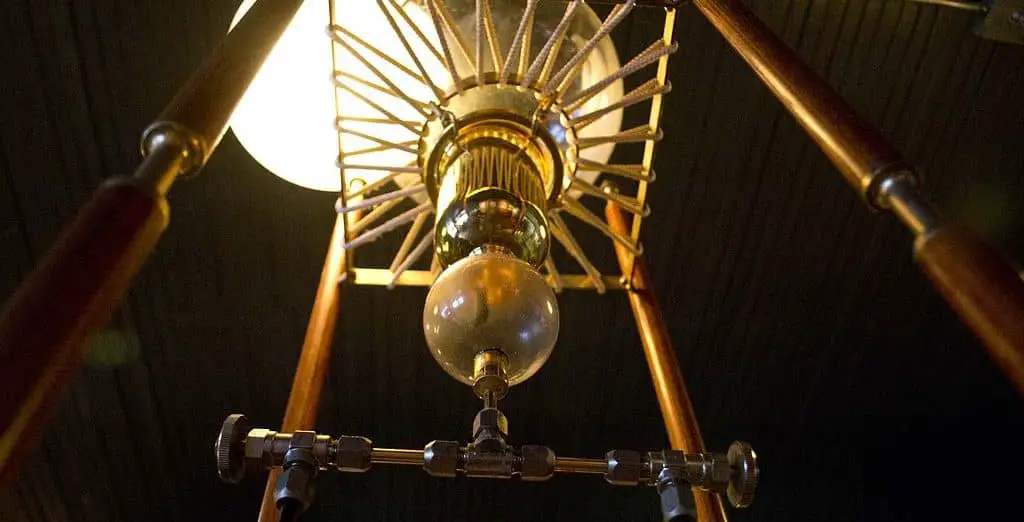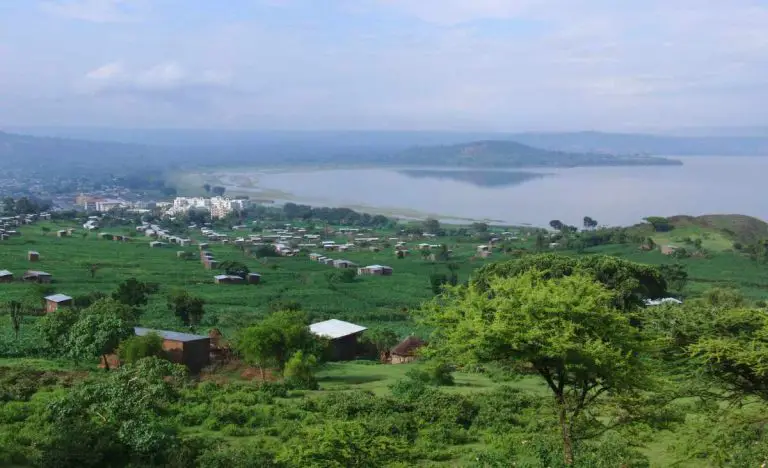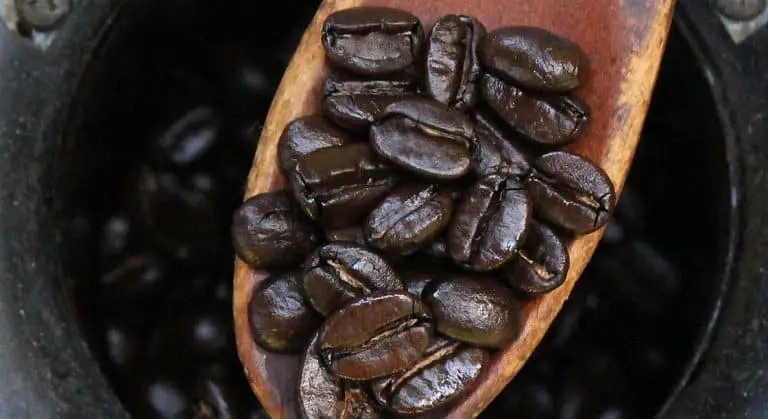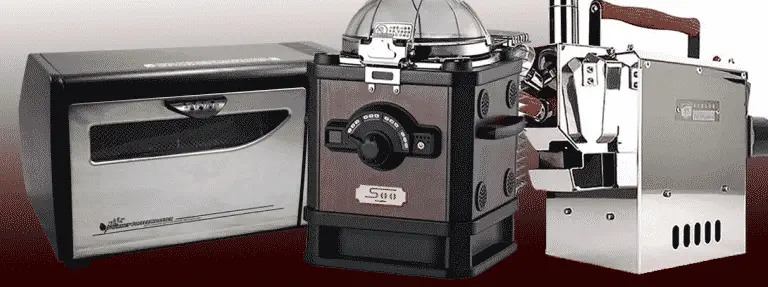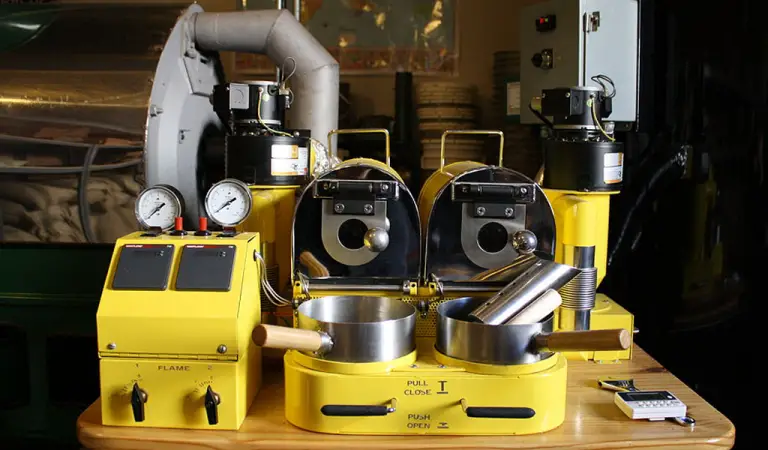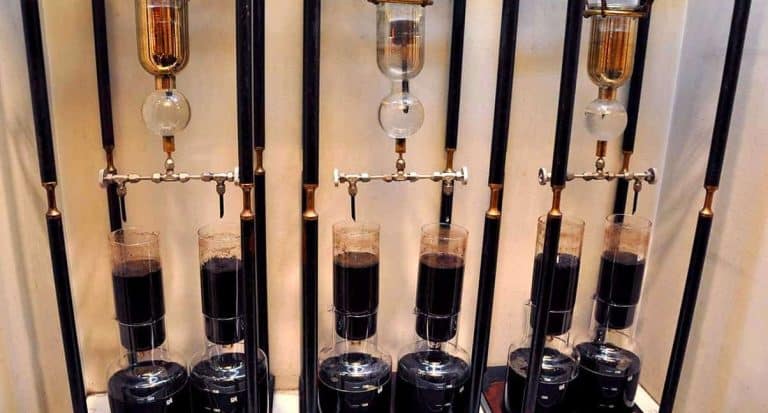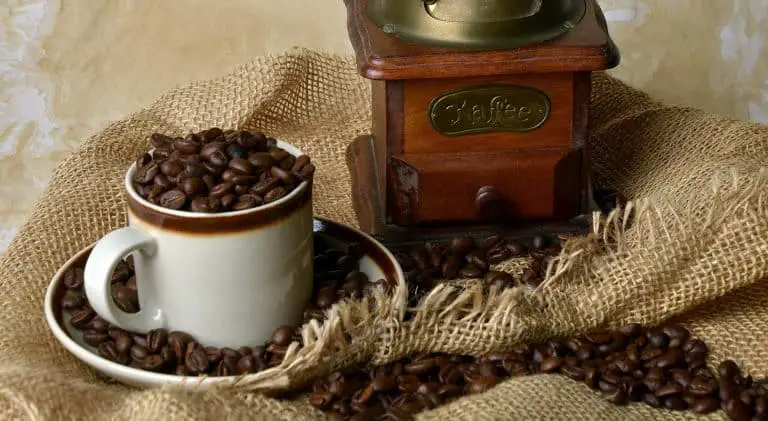The Best Japanese Pour-over Drip Coffee Makers
When I first started to really care about the coffee I drank a number of years ago, I thought good coffee was only about the roasted beans. I never really focused much on the brewing methods. I came to realize that the flavor of good, well roasted coffee beans is enhanced by careful brewing. My good friend John knows a whole lot more than me about coffee and he recommended that I look into the Japanese drip coffee makers if I really wanted to taste great coffee. So I researched a number of them and am now wondering, what took me so long?
Two Types of Drip Coffee Makers
There are two kinds of pour over coffee makers – immersion and drip. Drip makers brew coffee with a clear and rounded flavour which retains all the subtleties of the original bean. Unlike immersion makers they don’t combine the grounds with the water in a single slurry. The water is kept separate and drips slowly through the coffee grounds in a controlled rate of extraction. The resulting brew is low acidity, notably sweeter, smooth and with little sediment. The great thing is that the brew still retains body and oils from the bean.
Hot Drip is Good – Cold Drip is Great
As good as hot drip coffee is, cold drip is much, much better. Cold drip brewers take the drip concept even further by slowing it down a lot and avoiding the “damage” done to the bean by hot water. Brewing can take from 6 to 12 hours or longer. The result is an more subtly crafted coffee which passes along all hidden flavors of the bean. There’s an amazing clarity and complexity in the cup that no other brewing system can reproduce. It’s the high-fidelity equivalent of the coffee world. It takes time and dedicated patience but, it’s really worth it.
Here’s a quick price/size/capacity comparison table for the hot-brew drip coffee makers I’ll be discussing in this article. A few you’ll see take the same form but produce different tasting brews depending on the drip rate and the filter type.
Hot Drip Coffee Makers – Comparison Chart
| POUR OVER COFFEE MAKER | PHOTO | CAPACITY | RATING |
|---|---|---|---|
| Osaka Pour Over Drip Carafe Coffee Maker |  |
7 Cups | Timeless Japanese classic Re-usable filter system |
| Kalita Wave Pour Over Drip Coffee Maker |  |
3 - 4 Cups | Foolproof drip cone system Loses one star - lacks vessatility |
| Chemex Pour-Over Drip Coffee Maker |  |
3 Cups 6 Cups 8 Cups 10 Cups | American classic Loses a star for the paper filter |
| Hario V60 Drip Coffee Maker |  |
Size 01: 1-2 cups Size 02: 1-4 cups Size 03: 1-6 cups | Classic Japanese design. Great For Travellers |
The Hario V60 Pour-over Drip Coffee Maker
The V60 has become the standard of Japanese drip coffee makers. Hario created the V60 about 10 years ago and has received hundreds of design awards. It’s extremely simple and Japanese to its core. Here’s a video showing the process.

It is cone-shaped and uses a cloth or paper filter. The 60 degree slope of the cone and the hole at the point of the cone is carefully designed to regulate the flow of hot water over the grounds. The coarseness of ground is important in regulating the water flow and affect the flavor. It is recommended to control the water that you use a gooseneck kettle. (I discuss my favorites below). The downside of the V60 is it has no built in water flow regulator and it relies on the perfect grind and the pourer to get it right. It relies heavily on your skill which is why many professional baristas swear by them. The V60 is available in a range of colors and materials. My favorites are the copper V60 and the red porcelain variants.
Here’s a great video showing the V60 in use.
The Hario V60 Bottom Line
- A classic Japanese original that brew great coffee
- Costs more than competing copies
- Gives a lot of control by varying pour rate and coffee grind
- Portable and light
- Available with matching equipment like kettles and measures
You can check available colors and pricing on Amazon.
Kalita Wave Pour-over Drip Coffee Maker
The Kalita Wave is also also Japanese and has gained popularity in the last four of five years. It is also a cone but has a flat bottom with small drain holes to regulate the flow of water. It is a logical development of the V60 and has the advantage of having built in flow regulation.

This video explains the use of the Kalita Wave.
It’s less demanding than the Haribo and you’ll be able to produce a more consistent brew. Some people swear by it and say it gives a smoother taste than the Haribo.
I still prefer my classic V60 over the Kalita because I like to be hands-on (and maybe have an excuse for when I mess up). Many gourmet coffee chains are changing over too. It’s quite inexpensive, made from stainless but is not available in the huge range of colors and materials of the Haribo. It’s available in the 135 model (1- 2 servings) and the 155 model (3 to 4 servings).
Kalita Wave Bottom Line
- Less expensive than the V60
- Easier to control the brew because of holes and flat bottom
- It’s essentially a knockoff (with changes) of the V60
- A very good drip coffee maker
Check prices and sizes of the Kalita Wave on Amazon.
Chemex Wood Neck Pour-over Coffee Maker
The Chemex Wood Neck is not Japanese but in fact is an American invention. I am including it here because it inspired the well known Japanese Hario Wood Neck drip Pot which I talk about later on. In Fact, it was patented in April 1939 which means it was at least in prototype if not full production when Pearl Harbour was attacked in December 1941. That makes it a distinctly American design even though the inventor Peter Schlumbohm was born in Germany. See how the Chemex works in this video.

Here’s a great video showing the Chemex in use.
Chemex – An American Product from WWII
The Chemex coffee maker was available since late 1941 and has become an iconic piece of American coffee equipment. I’d seen it around before but never really paid it much notice until my wife a couple of years ago gave me strict instructions to bin our ugly plastic coffee maker.
We decided to simplify and I ended up buying a Chemex. After buying it I remembered as a kid seeing one abandoned for years in the dusty cabinet under our kitchen sink. My parents I suppose had good memories and held on to it for some reason. When I brewed my first batch, I knew why.
The Chemex a really simple brewing system which produces an extremely clean tasting coffee. I don’t see the point now in all those plastic coffee brewing contraptions I had been using over the years.
The elegant simplicity of the Chemex makes perfect sense when you read that the inventor was an eccentric chemist who held over 300 patents ranging from cocktail shakers to cars. His emphasis was on creating functional simple and practical everyday items. He also invented a unique double bonded paper filter to regulate the drip process to produce that perfect cup. Some may prefer the Hario flannel cloth filters but can’t argue that the paper ones are much more convenient.
Because he was a chemist, he understood how to extract coffee from a bean in a simple and foolproof way. The Chemex is made from a single piece of borosilicate glass and has a wooden collar with a leather tie to shield your hand from the heat. It’s not accidental that this beautifully designed piece. When you first see it it just makes perfect sense and something any serious coffee drinker wants to own. Also it’s a great way to quickly test a sample roast.
This unit has consistently great reviews and users form a strong bond and like owners of any classic. My simple Chemex Wood Neck can boldly go where any $5,000 espresso contraption can’t. It’s classic, has a great history and makes unbeatable coffee at a reasonable price.
The Chemex Wood Neck Bottom Line
- An American design classic – over 75 years old
- Brews a distinctive cup of coffee highlighting the lighter complex notes
- Has less control over the brew than the Hario version because of the thicker filter
- Great reviews from owners
Check out the latest prices for the Chemex on Amazon, it’s a really great deal.
Hario Woodneck Pour-over Drip Pot
The Hario Woodneck is in no doubt a remake of the Chemex and on the surface looks like a copy of the design. But, if one looks at it closer it has improvements and subtle differences that do make a difference that can be detected in the cup. One must remember that Japan after the War was accused of producing knockoffs and post war this was certainly true as their industries struggled to rebuild with the help of the US.

Japanese design has always been known for attention to detail and this is definitely apparent in the Hario Woodneck. The coffee it brews is well rounded and has a subtle but noticeable difference all owing to the design of the filtering system. The difference all about how it filters the oils produced by the coffee beans which can significantly impact the taste.
On one extreme all the oils are filtered out – call it 0, and on the other all the oils are passed to the cup – call it 10. The Chemex (discussed above) because of the absorbent paper rempoves most of the coffee oils – about a 2 or 3 on the scale. The Hario Woodneck because of its looser cloth filter passes along more of these oils – I’d say a 5 or 6 on the scale. A French Press for reference has a course metal filter and passes almost all of the coffee oils to the cup. The more oils, the denser and heavier the taste in the cup. Also, more coffee particles are passed by the loose filters resulting in a “thicker” coffee with more particles. A french press is close to a 10 on the scale.
This diagram explains it.
Hario vs. Chemex – Brewing Characteristics
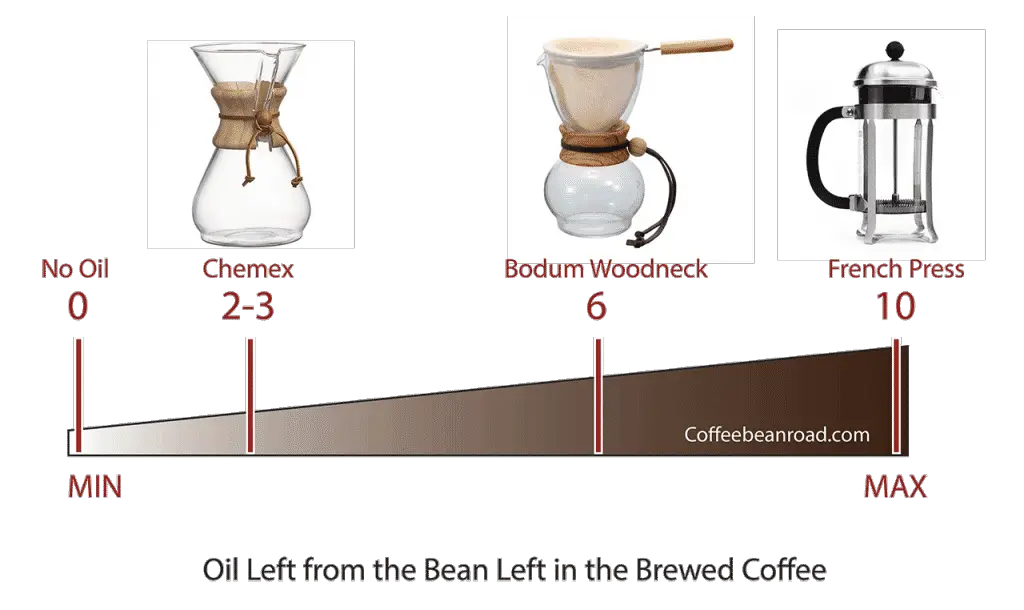
How Much Oil is Enough Oil?
So the question comes down to how much oil you prefer in your coffee cup. The oils give the “bottom” to the coffee and give you the heavier feel in the mouth. It adds those sugary, brown roasted flavours. Too much and you can ruin the cup! Usually with a lot of oil comes sediment because of the courser filter. The Chemex accents the delicate lighter notes of the bean, notes the heavier oil would drown out.
The Hario Woodneck is unique because the coarseness of the filter lets through the oily bottom notes but is still fine enough to hold back the sediment. The coffee has a magical but clear complexity and a balance like no other brewing system.
It also comes down to your roast and bean preference. If you like Guatemalan and Brazilian beans I would recommend the Hario Woodneck. If you want to try the more floral lighter African blends try the Chemex.
The Woodneck may resemble the Chemex but as in much that is Japanese, the difference is in the fine balance and the the attention to detail. The bottom line is explore. That’s what Coffee Bean Road is all about I suppose.
The Hario Woodneck bottom line
- The coffee is rich and concentrate but without sediment
- The classic cloth drip brewing method produces a unique flavour
- The filter takes longer to clean than a paper filter and needs time to dry.
- It gives the coffee much deep complex but not heavy taste.
You can check the current price for this great coffee maker on Amazon.
The Osaka Pour-over Drip Carafe
The Osaka Drip Carafe is a six cup drip coffee maker. I find it’s one of those products that feels like you’ve had it for years the first time you pick it up. It’s unique in that it has a metal laser cut double filter which allows brewing of finely ground coffee beans. This helps yield a sharper, stronger coffee because of the increased surface area of the grind. This results in a slower drip brewing process – so patience is needed but the finely balanced resulting coffee is worth the wait.

The great thing about the filter is that it’s easy to clean and dry – just spray it with water and it’s ready to brew again. It seats perfectly onto the carafe and because it’s metal, none of the essential coffee oils leech into the filter like with the Hario or Chemex.
The Osaka Design
Physically it’s a beautifully considered design which fits the hand perfectly and is wonderfully balanced. The heat resistant collar available in a range of colors is removable and is a pleasure to use. Again, this design has the simplicity of design and attention to detail we expect from Japanese products. The grounds measurement is subtly but legibly incorporated and the supplied cork prevents the heat from escaping from the coffee while it brews.
In my opinion, the Osaka is a classic and as iconic as the Chemex but is a a more current and usable design. The filter system may not have the instant appeal of the cloth or paper filters of the others but I quite like the convenience and durability of the micro laser metal filter.
The Osaka Drip Carafe Bottom Line
- Great tasting and balanced coffee
- Slow drip for increased flavor but longer brew time
- Beautiful classic Japanese design
- Borosilicate heat-resistant glass
You can see current prices for the Osaka drip Carafe and great reviews on Amazon.
Japanese Cold Brew Drip Coffee Makers
I used to think of cold coffees as hot brewed coffee poured over a cup of ice. When I was a kid, iced coffee was more of a confection with sweetened whipped cream with a maraschino cherry perched on top. It’s taken a while for real cold brewed coffees to be enjoyed as a quality alternative to hot brewed.
Three Ways to Cold-brew Coffee
There are two three distinct methods of cold brewing. I’m eliminating the (now denigrated) poured-over-ice method. That’s because the real advantage of cold-brew is avoiding the hot water and how it affects the character of the beans during the brew. The two methods are immersion and slow drip.
The Immersion Method
The immersion system steeps the grounds in water forming a kind of slurry and allow it to drip through slowly. The coffee is in contact with the water for a long time. Full immersion cold brew will have quite a bit of sediment in the final cup. It tends to have a stronger (harsher?) flavour and a chocolatey note given by the sediment. Some people prefer it.
It also produces more bitterness and acidity. The sediment can be avoided by adding a double or even triple paper filter but the tradeoff is that almost none of the oils from the beans will pass through and the complex “lower” notes tend to be muted.
The Slow Drip Method
This is the Japanese method . Water is slowly dripped through the coffee grounds and a filter. Water is not allowed to “pool” in the filter cone which avoids gasses like C02 building up. The water trickles through the grounds which also help to filter the coffee. The water is always moving and so only certain flavours of the bean are extracted.
The result is a clean “transparent” taste which is sweet and complex and retains the complexities of the bean flavour. It’s a well-rounded taste which has an amazing clarity. It’s almost completely free of sediment but still has body.
All the Japanese cold-brew makers I discuss below are slow drip. They require patience and a devotion because the process can take up from 6 – 12 hours to complete.
Cold Drip Coffee Maker Comparison Chart
| POUR OVER COFFEE MAKER | PHOTO | CAPACITY | RATING |
|---|---|---|---|
| Yama Glass Cold Drip Maker |  |
6-8 Cups | Classic Japanese Design The ultimate drip system |
| Hario Acrylic Water Dripper |  |
2 to 6 Cups | Lowest cost tower system Good flavour Dripper a bit finicky |
Yama Cold-brew Drip Coffee Maker
There are a multitude of ways to make coffee but nothing screams aficionados (and disposable income) like having the Yama Cold-drip coffee tower perched in your kitchen. The original version of this coffee maker is the Japanese Kyoto Drip coffee maker which has a much larger capacity and is usually found in high end coffee shops in banks of 3 or 4. Oji is another maker of the professional Japanese cold drip equipment you’ll see in third wave cafes. The Yama is perfectly scaled for home use. Here’s a video from Yama.
The Yama is obviously patterned on the on the Japanese pro units although Yama is based in Taiwan. For home use it’s the perfect size and while not exactly cheap, is a fraction of the price of the Kyoto and Oji units which sell for well over $2000. The Oji unit in the photo below looks like a cross between Chemistry lab equipment and agricultural drip feed fittings. Instructables has a DIY version here for those so inclined.
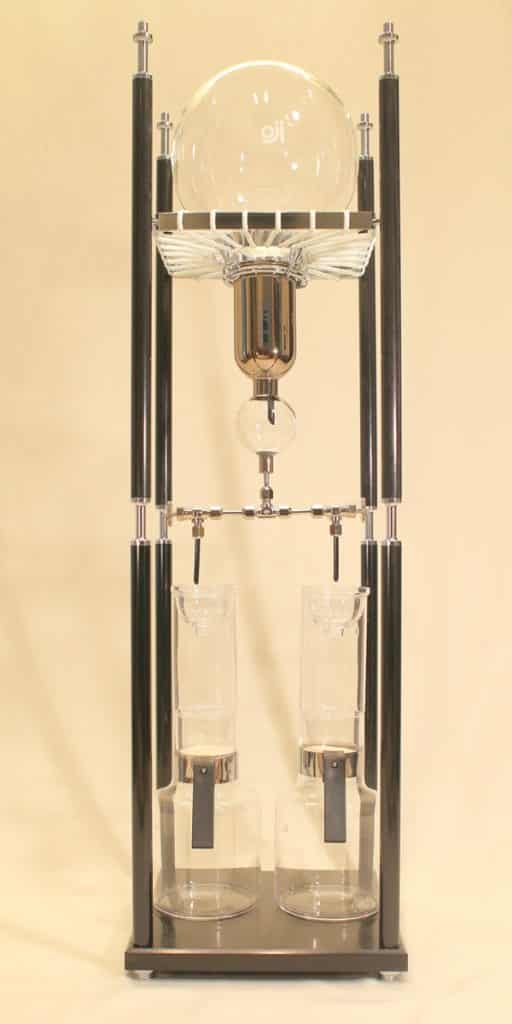
The Yama unit consists of a vertical frame and a series of stacked up glass vessels and tubes that would look at home in a chemistry lab. In fact you can find many DIYers cobbling these quite simple things together with repurposed lab equipment and bits of rubber hoses. Doesn’t exactly scream sanitary to me. This drip unit seems the way to go.
The scientific aesthetic is not an accident as many Japanese coffee makers were originally designed and manufactured by companies like Harbo who manufactured lab glassware for many years. And coffee making, for the serious, is a kind of chemistry bordering on alchemy.

So, What’s Good About the Yama?
If you visit Japanese kissatens, the the modern day version of the traditional tea shop, you’ll find cold brew towers like the Yama. To me they capture a time when Japan was just starting to embrace Western technology and has that great mix between modern tech and ancient ritual.
Then there’s the taste. The tall vertical tower allows water to drip down slowly over a long distance. This unrushed 6-12 hour process produces a unbelievably smooth, well rounded cold brew coffee. Maybe it’s the size and the separation between the chambers but I could swear it tastes better than coffee from any other cold brew system.
Maybe it’s just the mystique and the spectacle of coffee dripping through the beautiful glass and wood tower. Could I be trying to justifying the price tag to my wife? Does it really matter in the end what makes your coffee better – as long as it’s better. Right… right?
Check prices for the Yama on Amazon. It’s a beautiful design.
Hario Acrylic Water Dripper
The Hario Acrylic works like any other Japanese slow drip coffee maker. It has a clear acrylic frame with cutouts that hold 3 chambers: the water reservoir, the coffee chamber with drip valve and the pot and uses round pre-cut paper filters. All the chambers are made of the quality glass you would expect from Hario. Here’s a video of the Hario Acrylic.
Some may question the acrylic frame but in reality it works fine and helps keep the price down a bit. Still, it’s not an inexpensive unit and there are certainly cheaper options. It’s made in Japan so the fit and finish is very good and the glass from Hario is the best. Get the coffee/water ratios and the drip rate right and it will produce superb coffee and you’ll find it well worth the price.
Like other tower units it is a bit fragile because the chambers are loosely placed in the frame. I would be a bit concerned if had to assemble it every time I used it. Better to set it up somewhere in the kitchen and leave it there. It’s a nice looking unit and looks good set up.
To get the best coffee manufacturer recommends a brew rate of 2 drops every 3 seconds but I find that one drop per second is more to my taste. One thing to watch out for is that bubbles in the water can block the small drip spout. I’ve had good luck with tap water which has fewer bubbles than filtered water. Also you need to remember to pre-moisten the grounds (like most drip makers). This helps draw the dripping water throughout the grounds and prevents it backing up.
All in all this is a good mid-level unit. It’s more expensive than others but well worth it if you have the money to spend and like the design.

Check current prices for the Hario Acrylic on Amazon
Summing It all Up
The common thread with all the Japanese drip coffee makers in this post is that they produce really great tasting coffee. The hot brew variations are for some reason cheaper but if cold brew is your thing, the cold brew units will get a much more rounded flavour. The thing is that you cant drink cold coffee year round unless you live in a really temperate climate.
If you enjoyed this post, you may enjoy my comparison article about all the different types of Japanese coffee makers: What Are the Best Japanese Coffee Makers for your Home?


